Here we are in the final quarter of 2023, & things are looking relatively stable for a change—or at least as close as we’ve gotten in a few years. On top of stabilizing logistics & the C market, Peru containers have started landing with Colombia & Rwanda close behind. Read on for details on the state of logistics, the C market, & every country in which we work. To listen, click here.
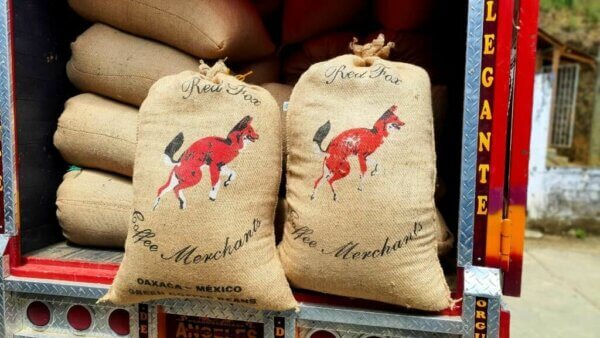
Logistics, Port, & Warehouse Updates
Demand in the ocean freight market continues to drop as we head into Q4 2023. Rates between China & the US West Coast recently hit pre-pandemic levels, spot rates on all lanes have experienced significant declines since pandemic highs, & overall capacity continues to exceed demand. Demand typically increases somewhat in early September, as shippers prepare for China’s warehouse & port closures during the Golden Week holiday in early October. We expect to see some increase in ocean freight rates since shipping lines tend to increase their blank sailings & last minute cancellations during this holiday period to offset the dip in demand. Other impacts to ocean freight in Q3 2023 included drought conditions in Panama affecting sailings through the Panama Canal, & hurricanes & tropical storms in Atlantic shipping lanes bringing delays & unpredictability to some transatlantic routes.
US ports are generally stable, with congestion at relatively normal levels, & wait & dwell times down on average. The US West Coast’s ILWU members officially ratified a new 6-year contract at the end of August, ending a 13-month long stretch of negotiations between dockworkers & West Coast ports that threatened to disrupt trade & led many businesses to shift volumes to the US East Coast & Gulf ports. The East Coast & Gulf’s ILA port worker union is a year away from the end of its contract with port operators & will begin negotiations soon.
In the domestic LTL freight market, this year has seen some high-profile bankruptcies, including one of the nation’s largest freight & trucking companies,Yellow Corp, which shut down operations at the end of July. Slowing demand for freight, high operating costs, & lower freight rates has put pressure on carriers this year, with many smaller carriers leaving the market. Driver shortages continue to be a concern. We expect freight rates to increase again, driven by rising diesel prices, a smaller pool of carriers, ongoing driver scarcity, & a seasonal uptick in demand for the holidays.
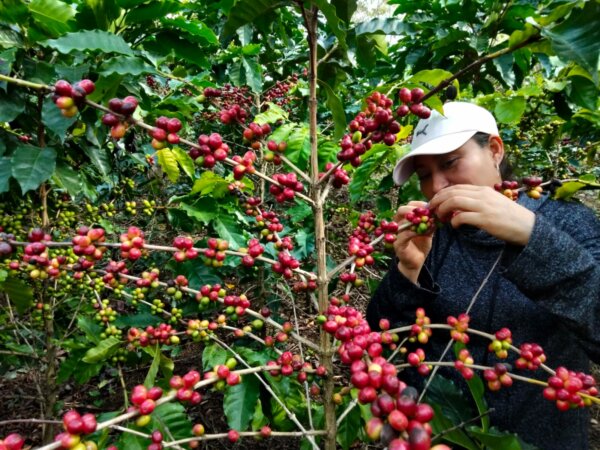
Supply, Demand, & The C Market
This quarter has seen an interesting moment in the C market. In addition to continued stabilizing & downward trends (closing under $1.50/lb against December 9/28, only around $.10/lb under our last quarterly update), the market has moved out of the negative switch it has been in since late 2021/early 2022, marking a possible return to a certain type of normal in the coffee buying world.
A negative switch is when coffee in the future is cheaper than coffee in the present. During a negative switch, the closest C market terminal month would be higher than subsequent terminal months, making spot coffee more valuable than coffees afloat or still waiting to be harvested. In that scenario, demand exceeds supply, because roasters want coffee now & aren’t as concerned about coffee in the future.
What caused the negative switch? Likely a chain reaction of the effects of the pandemic. Large commercial roasters that supplied offices, airlines, & other then-defunct distribution channels were sitting on years’ worth of contracted coffee that was supposed to support just a few months. Many of our roaster partners ran into the same issue. In our sphere, once our clients roasted through those positions there was reasonable anxiety about forward booking—no one wanted to hold coffee as no one knew how/when demand would pick back up & what distribution would look like. Toward the end of 2021 as roasters were clearing those initial positions, & people began to go out again in greater & greater numbers, demand picked up faster than that new angst-ridden acquisition mentality accounted for, & spot coffee became more valuable than future coffee. The C market turned upside down in a negative switch.
Now, finally, this past quarter, nearer term coffees are cheaper than those in the future. We’re out of the negative switch.
What does that mean? Things don’t look like 2019, but no longer do they look like early 2023. Roasters are beginning to thoughtfully purchase coffees & hold positions with confidence. More than ever, we’re trying to have these conversations as we work with roasters to book coffee: What are you planning on using this coffee for? How much are you planning on roasting on a weekly/monthly basis? It’s a great moment to work towards a new normal with high-level forecasting as part of that.

Peru
Southern Peru experienced a lengthy drought in June-August. Typically, it rains at least a few times during this period, encouraging ripening. This year, it didn’t rain at all in Cusco or Puno. In some areas, like Cusco’s Incahuasi Valley, producers are used to watering coffee trees at least once a year & were able to increase frequency accordingly, saving production from draught effects. Harvest is peaking with a small delay of a few weeks.
In other areas of Cusco, including Calca, most producers do not water their coffee trees, so production is down.
Some parts of Northern Peru faced the opposite problem: more rainfall than usual in June-August, making parchment drying difficult. Current weather is sunny & drier than usual, ideal for drying coffee. Production is up in Northern Peru this season.
In Peru at large, total 2023 production will decrease 3% over 2022 due to high temperatures in several coffee areas. An El Niño phenomenon, this decreases parchment yields by stressing plants, stunting coffee growth. This phenomenon is clear in northern, central & southern producing areas so far this year.
Since higher altitude farms in Northern & Southern Peru are at peak harvest, we’re beginning our busiest months in the lab & dry mills as we cup, mill & ship.
Pandemic-related container shortages have finally resolved. Bookings with shipping companies are readily available & logistics are moving relatively smoothly. A drought affecting the water supply in Panama Canal is causing delays for containers headed to the Gulf & East Coasts, but thus far it is only slowing shipments down by 5-6 days. We continue to monitor this situation closely.
Available Lots:
Our first 2 containers of Cusco coffee stripped into the Annex & Continental at end of September. First northern coffees went afloat to Houston & the Annex this week. Inbound shipments will continue to strip into all 3 warehouses throughout Q4. Meanwhile, we still have a wide array of last season’s lots holding up beautifully at a discount.

Colombia
Second semester harvest has officially kicked off & should peak November/December. Heavy drought conditions, due to El Niño, will keep production subdued into the new year. Flowering for the first semester 2024 harvest also appears to be hindered at intermediate elevations to a degree. From Johan Penna at Asorcafe in Inzá, Cauca: “the higher altitudes have seen promising effects from current summer conditions in terms of flowering but farms around 1500 masl are starting to see negative effects of El Niño.” Lack of rain in the months to come will breed potential concern for the size of the 2024 harvests.
Colombia has witnessed some of the planet’s worst inflation rates since 2022 but is finally seeing a small degree of relief with rates dropping since the midway point of 2023.
Available Lots:
Fresh Inzá & Nariño lots are now afloat & headed to all 3 coasts.
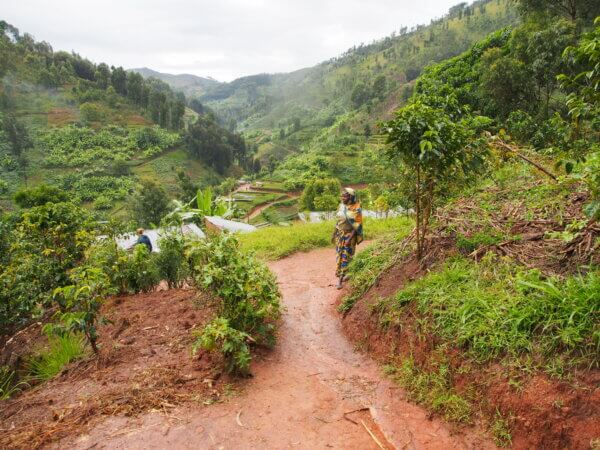
Rwanda
Rwanda’s 2023 harvest has come to a close. Lower production—coffee production here generally follows a biennial cycle of higher-yield years followed by lower-yield ones—& high prices were the hallmarks of this season. Nationally, cherry prices were high for the second consecutive year. NAEB (Rwanda’s National Agricultural Export Development Board) maintained the previous year’s minimum price of 410 Rwf/kg of cherry, a 65% increase over 2021 when the farmgate price was 248 Rwf/kg of cherry.
In Nyamasheke District where we work, March-June rainfall supported good cherry development. Kanzu’s high elevation slows cherry maturation & reduces pressure on farmers to pick their coffee all at once, encouraging selective cherry picking & positively impacting the quality we see in the cup. However, the region experienced a 15% decrease in coffee production this season, driving up competition for cherry & local prices by extension. Our partners at the Kanzu washing station paid cherry prices of up to 705 Rwf/kg this season, nearly 72% higher than the national minimum price set by NAEB.
Looking ahead to next year’s harvest, we expect 2024 to be a high-production year & early September rains look to be supporting good flowering. Additionally, coffee trees planted in late 2020 & early 2021 will be entering production for 2024, further increasing the likelihood of high yields for next season.
Available Lots:
Shortages of food-grade containers for export in Kigali continue to be a setback for shipping from Rwanda, but the good news is that our fresh crop Kanzu lots are all afloat with first arrivals expected at East Coasts ports in October. We’ll move volume to the west coast from there, with Annex warehouse availability expected by early November. Please reach out to book fresh crop lots as we currently have ample pre-ship sample availability in our lab in Berkeley. Look out for red plum, honeycomb, tangerine, blood orange, toasted sugar, gingersnap, & blackcurrant in these beautiful lots.
Kanzu lots from the 2022 harvest are still available in both NJ & CA. We currently have 43 bags at the Annex & 67 bags in Conti NJ from a variety of outturns, all priced to make room for our incoming fresh arrivals. If you’re interested in any of this volume, please reach out to your Red Fox rep with a bid.
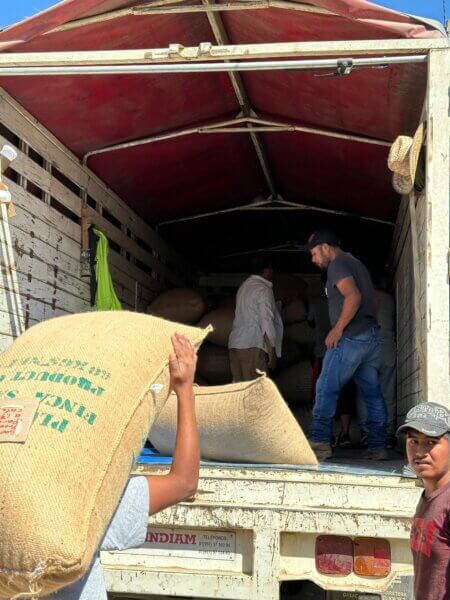
Mexico
Early strong rains over the summer & slightly earlier than usual flowering seem to be setting the stage for an early harvest: possibly as early as November in some lower-altitude growing areas. Producing partners & the Red Fox team have been engaged in off-season quality improvement workshops with producers.
On the political front, Mexico seems poised to elect its first female president in next year’s presidential election, as both leading political parties have announced women candidates. Turf wars between rival cartels continue to plague & terrorize residents in rural towns in Chiapas near the Guatemala border. The area has seen increased extortion, kidnapping, & shootouts in recent months. Cartels are fighting for drug routes as well as migrant smuggling/human trafficking. Mexican President Andres Manuel Lopez Obrador plans to meet with US President Biden in the coming months to address the worsening migrant refugee crisis at the borders & drug trafficking.
Available Lots:
On the West Coast, we’re down to 20 bags of an excellent organic Chiapas lot, super balanced & sweet with a fruit forward profile, along with 4 bags of one of the top Oaxaca producer micro lots of the season from San Pedro Yosotatu, Eudin Espinoza. On the East Coast, there are 2 prime Pluma lots from Ozolotepec as well as some excellent Puebla community lots.
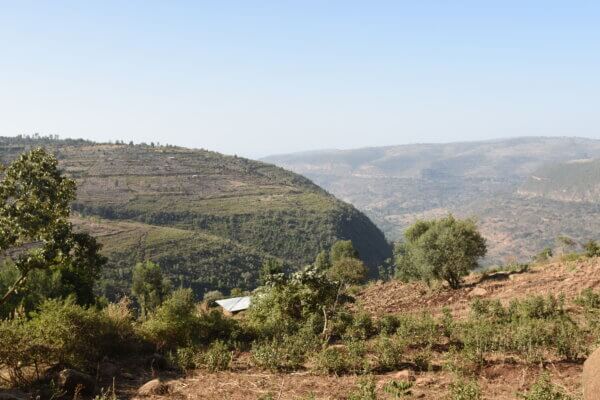
Ethiopia
The 2022/23 crop has been a struggle on all fronts across the trade. High cherry prices this past November-February coupled with government-mandated minimum export levels have now equated to a surplus of both washed & natural coffee stocks in Addis. Quality control at the dry mill & export levels will be of even more critical importance than normal this coming winter into spring.
Heavy rains in July & August have eased & the weather outlook is positive for the coming crop. Our supply chain partners expect a similar volume of washed coffees to 2022/23. Both cherry & export prices are expected to drop from the past 2 seasons, though we’ll count those chickens when they actually hatch in January.
The political situation has reignited in Tigray with violence across the area for more than a month. A 6-month state of emergency was declared for the Amhara region on August 4th.
Available Lots:
G2s have sold quickly as expected with under 100 bags remaining in each warehouse. The value proposition on each of these lots remains unmatched.
Organic Agaro G1 washed offerings from Duromina & Nano Genji are in excellent condition. From Global Lab Manager Joel Edwards: “The Agaro lots have never tasted better. They continue to open up & become more expressive. These are the Agaros we know & love. Anyone who tasted these on arrival & said they were ‘muted’ would be shocked to taste them now.” So if that describes you, it’s time for a revisit.
The hidden gem in our offerings is the washed Bera G1 lot split between the Annex & Dupuy Houston. The aromatics are so classically Southern Ethiopia with floral honeysuckle-esque character that perfumes a cup laden with candied citrus & basket of various stone fruits.
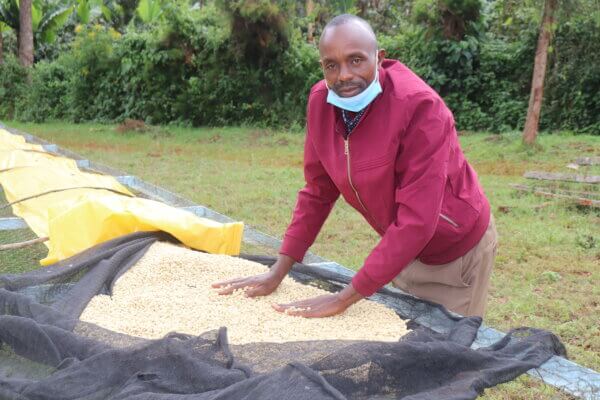
Kenya
The situation around coffee marketing & exporting in Kenya remains volatile & unclear. Nairobi’s coffee exchange has reopened, but due to lack of export license renewals most exporters have not been able to participate in coffee purchasing. The Government now requires export companies to apply for a new kind of license, & at the moment less than half of the purchasing parties in Kenya can participate in the exchange.
Our partners there have been keeping us up to date on where things stand, & many of the washing stations are holding their coffee until there’s more clarity. To add to these issues, many export entities are now looking at laying off large portions of their staff, as many of the biggest buyers have had to look elsewhere to fulfill their purchasing volumes. For example, due to the lack of certified coffee through the exchange some of the largest grocery & chain store buyers have had to reduce or cancel contracts. Typically, when supply has been low it’s driven prices up in the exchange, but because the reason for scarcity is systemic issues rather than crop size, the price of coffee has actually dropped over 30% on average.
Although the outlook is currently bleak, we have faith that our strong ties in Kenya & our commitment to spending time there will see another year of delicious coffees arriving quickly. As with every other year we love seeing our customers roasting these special coffees & look forward to buying them again.
Available Lots:
We’re down to 26 bags of Gicherori AB & 8 bags of Karindundu AB in Continental, despite these being 2 of our favorite washing stations year over year. In the Annex we have both 5 bags of Gicherori AA & 15 of the AB, as well as 12 bags of Kangurumai AB & 14 bags of Konyu AB. All of these coffees are singing at the moment & deserve to be enjoyed as we head into fall.

Guatemala
A sourcing partner reported that March/April flowering in Huehuetenango was good, with rain up 15% from 2022 & 34% over the historical average. July saw an even larger increase in rain as the region experienced a transition between La Niña & El Niño weather phenomena, additionally producing a heat wave.
From the Global Agricultural Network (GAIN), “Production costs increased 60% & few farmers can afford specialized labor to identify & harvest only red mature cherries, reducing overall quality. Guatemala’s coffee planted area remains steady but may shrink slightly in the middle term as other more profitable crops are starting to substitute some coffee areas.”
Despite the challenges of global weather patterns & increased production costs, we are looking forward to the coming harvest season, with the focus of expanding our reach in Huehuetenango.
Politically, an August 20th left-leaning congressman Bernardo Arévalo won a run-off election against Sandra Torres with nearly 61% of the vote, in what was seen as a landslide victory & is set to be inaugurated on January 14th, 2024.
Available Lots:
There are currently 48 bags Chimaltenango San Jose Poaquil in NJ & 22 bags Huehuetenango Las Bromelias in CA.
